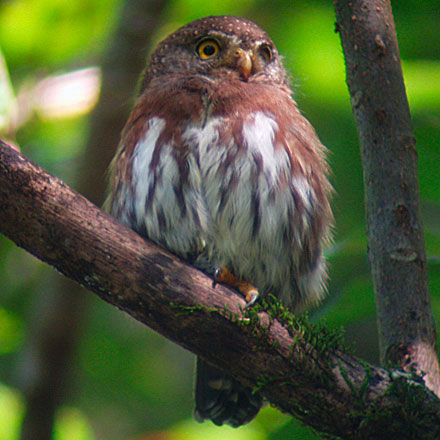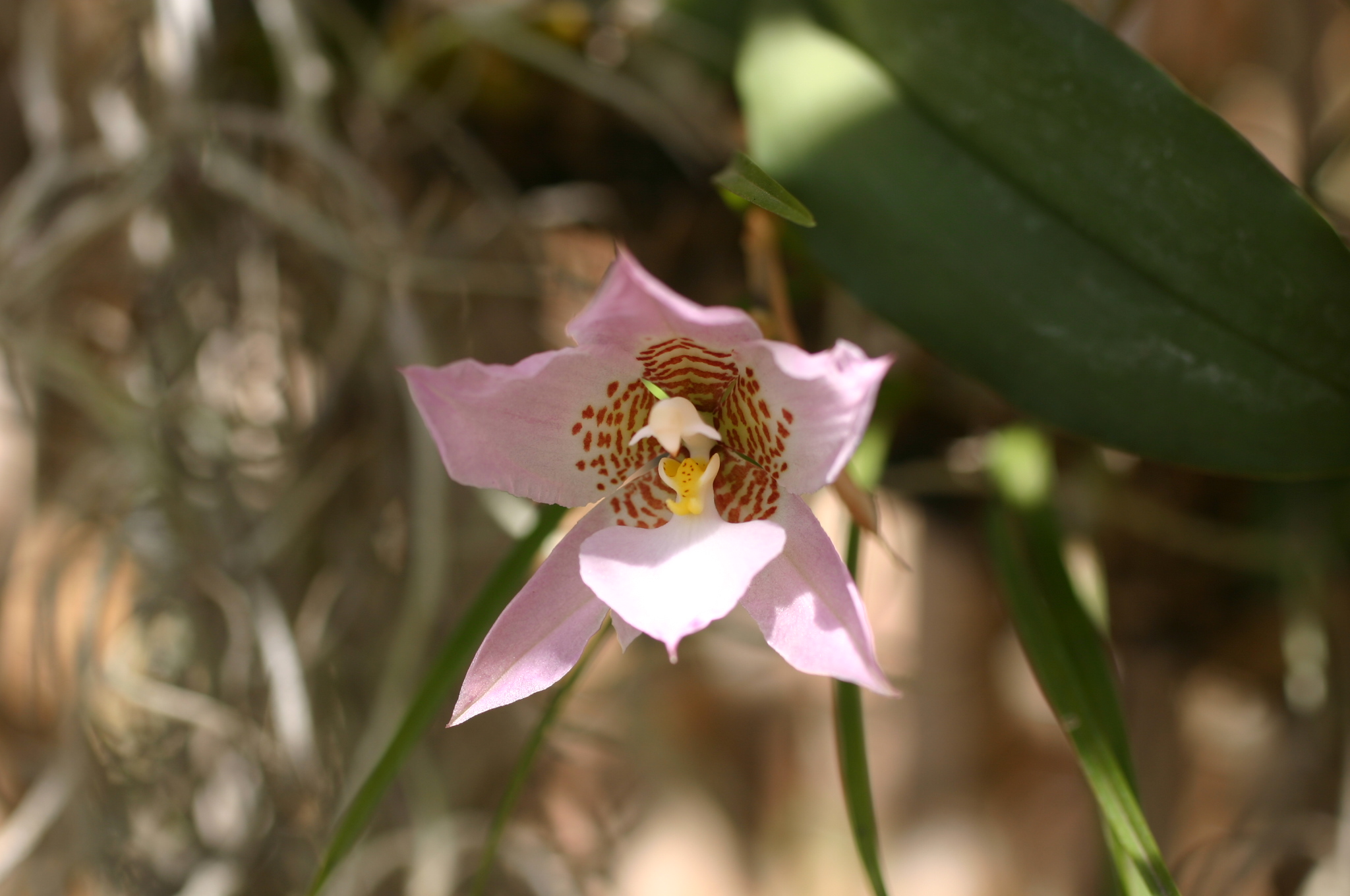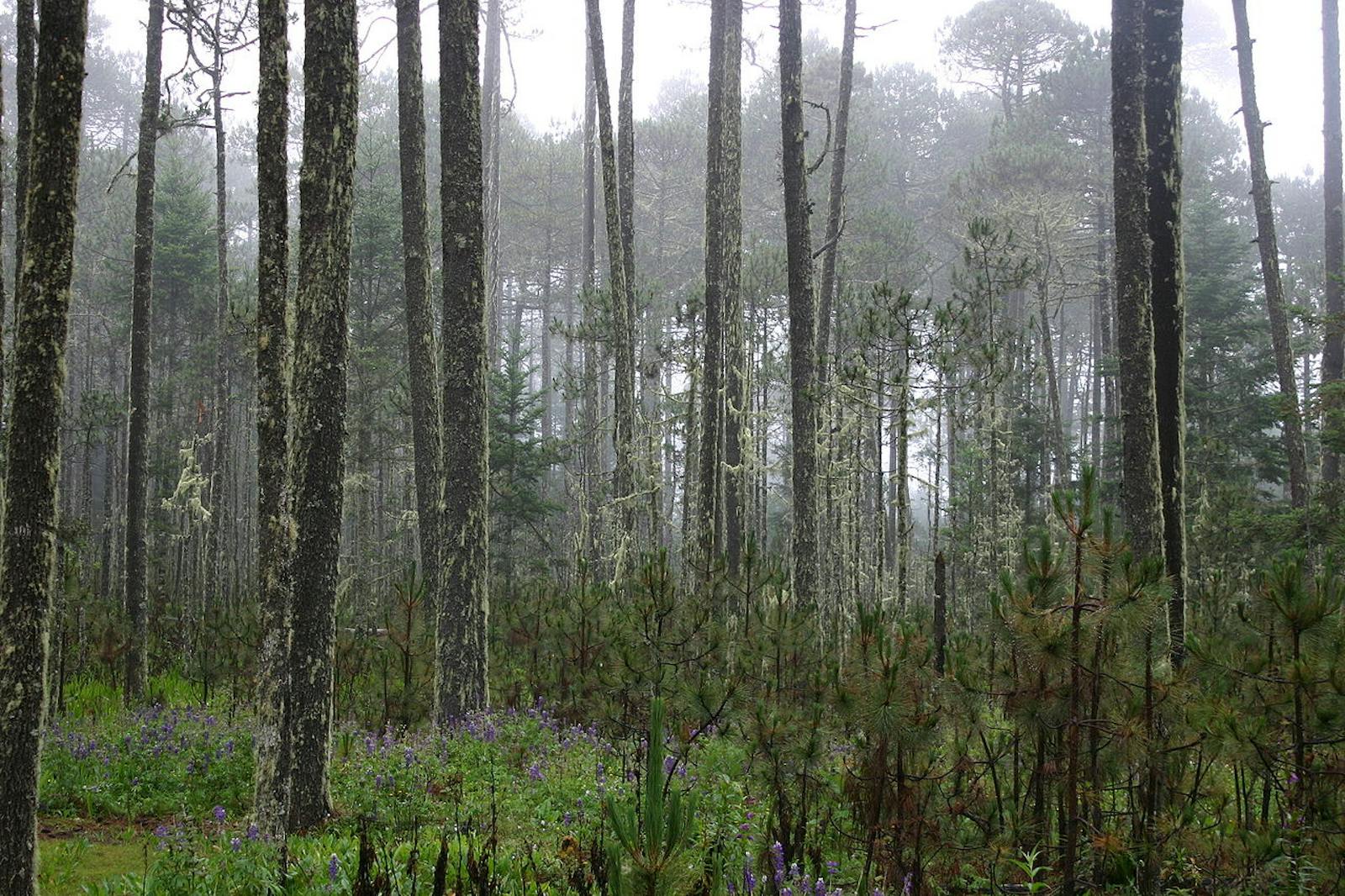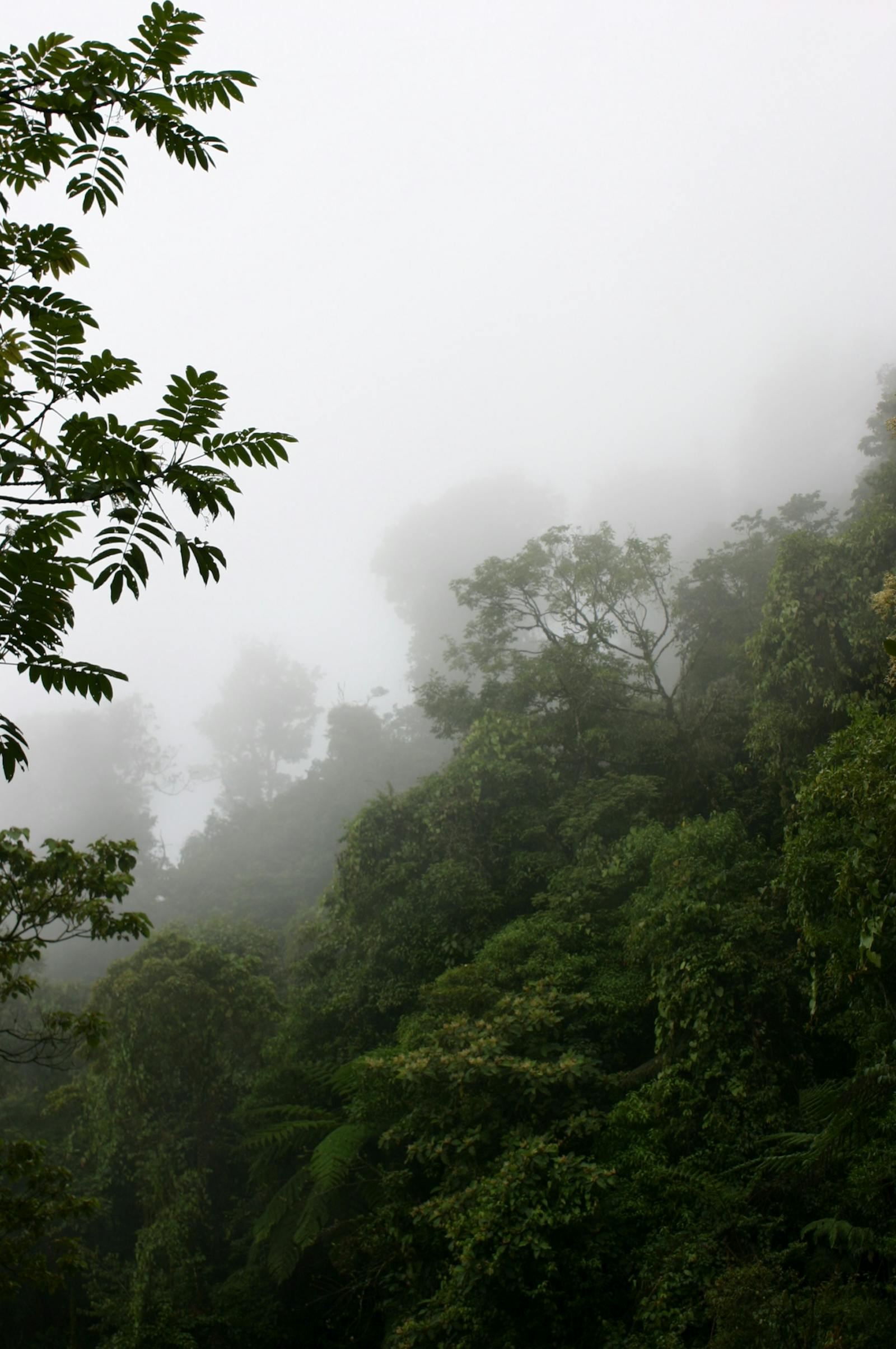Sierra Madre De Oaxaca Pine-Oak Forests
The ecoregion’s land area is provided in units of 1,000 hectares. The protection goal is the Global Safety Net (GSN1) area for the given ecoregion. The protection level indicates the percentage of the GSN goal that is currently protected on a scale of 0-10.
Bioregion: Mexican Dry & Coniferous Forests (NT28)
Realm: Central America
Ecoregion Size (1000 ha):
1,438
Ecoregion ID:
557
Conservation Target:
55%
Protection Level:
1
States: Mexico
The Sierra Juarez treefrog is only found in the cloud forests of the Sierra de Juarez, a mountain range within the Sierra Madre de Oaxaca Pine-Oak Forests ecoregion. This critically endangered treefrog is very rare and only a few individuals have been collected since 1970. It is very small— males and females reach up to 30 and 41mm in length respectively. This stream-breeding species thrives in pristine cloud forests where clean freshwater streams, creeks, and pools lined with rocky shorelines and aquatic vegetation provide the very specific habitat it needs to breed.

The flagship species of the Sierra Madre De Oaxaca Pine-Oak Forests ecoregion is the Tamaulipas pygmy owl. Image credit: Creative Commons
This ecoregion is located in northern Oaxaca State, and is delineated by the Sierra Norte de Oaxaca Mountains, which have characteristically abrupt and rugged topography. Its tallest peak is Zempoaltepetl (3,400 m), and most of the terrain in this area is above 1,000 m. The climate is temperate and humid with yearly temperatures and rainfall ranging from 16–20°C and 700–4,000 mm respectively.
This ecoregion has a mosaic of vegetation formations due to the varied climate and topography. Pine forests occur between 1,600–2,600 m, with trees reaching 25–40 m in height. Dominant pine species include Mexican white pine, Chiapas pine, and a regional subspecies of smooth-bark Mexican pine. Pine-oak forests found at 2,000–2,800 m are characterized by Hatweg’s pine, Montezuma pine, netleaf oak, and various other oak species within the genera Quercus. Within humid areas of high elevation cloud forests predominate with red gum, remiendo, and bastard briziletto trees.
The Sierra de Juarez, included within the ecoregion, is one of the richest plant areas in Oaxaca. Dominant endemic plant families include Leguminosae, Rubiaceae, and Monimiaceae. The pine-oak forests of north Oaxaca contain 45 species of oak tree. This ecoregion’s forests contain nearly 40% of the endemic vertebrates of Mesoamerica.

Rhynchostele cervantesii. Image credit: Creative Commons
There is an abundance of birds, with restricted range species such as Tamaulipas pygmy owl, gray-barred wren, and the vulnerable dwarf jay and bearded wood partridge. The forests also house a high diversity of amphibians and reptiles. Notables include canyon tree frog, the vulnerable Macdougall’s salamander, the critically endangered Sierra Juarez treefrog, and Sierra false brook salamander.
The outstanding value of Oaxaca pine-oak forests lies in its high content of endemic and endangered species, as well as in the uniqueness of its floral composition. Despite this, few federal protected areas exist in the state. National parks, however, have been proposed and established to promote the knowledge and appreciation of this ecosystem and the invaluable resources they possess. Several important bird areas have also been located within this ecoregion, including Sierra Norte, Cerro de Oro, Valle de Tehuacán, and Sierra de Zongolica.
Cattle farming and grazing are responsible for the deforestation in some portions of the area, which facilitate erosion and soil loss and thus hinders the ability of the forest to regenerate. The flora in the area is also threatened by the collection of plants with ornamental value and by resin extraction, which is the technique of collecting sap or resin from trees by cutting into their outer layers; if done in a controlled manner is not necessarily harmful. In Oaxaca, these forests are surrounded by fragments of perturbed (secondary) vegetation and as further habitat is lost many species will have difficulty migrating or adapting.
The priority conservation actions for the next decade will be to: 1) increase the number and size of protected areas; 2) promote awareness and educational local outreach on the benefits of protecting biodiversity; and 3) integrate more sustainable methods of farming and resin extraction.
Citations
1. Valero, A. Schipper, J. Allnutt, T. 2019. Southern North America: Southern Mexico https://www.worldwildlife.org/ecoregions/nt0308 Accessed June 26, 2019.
2. Styles, B.T. 1993. El género Pinus: su panorama en México. Pages 385-408 in T. P. Ramamoorthy, R. Bye, A. Lot, and J. Fa (editors), Diversidad Biológica de México. Mexico: Orígenes y Distribución. Instituto de Biología, UNAM.
3. Rzedowski, J. 1978. Vegetación de Mexico. Editorial Limusa. Mexico, D.F., Mexico.




